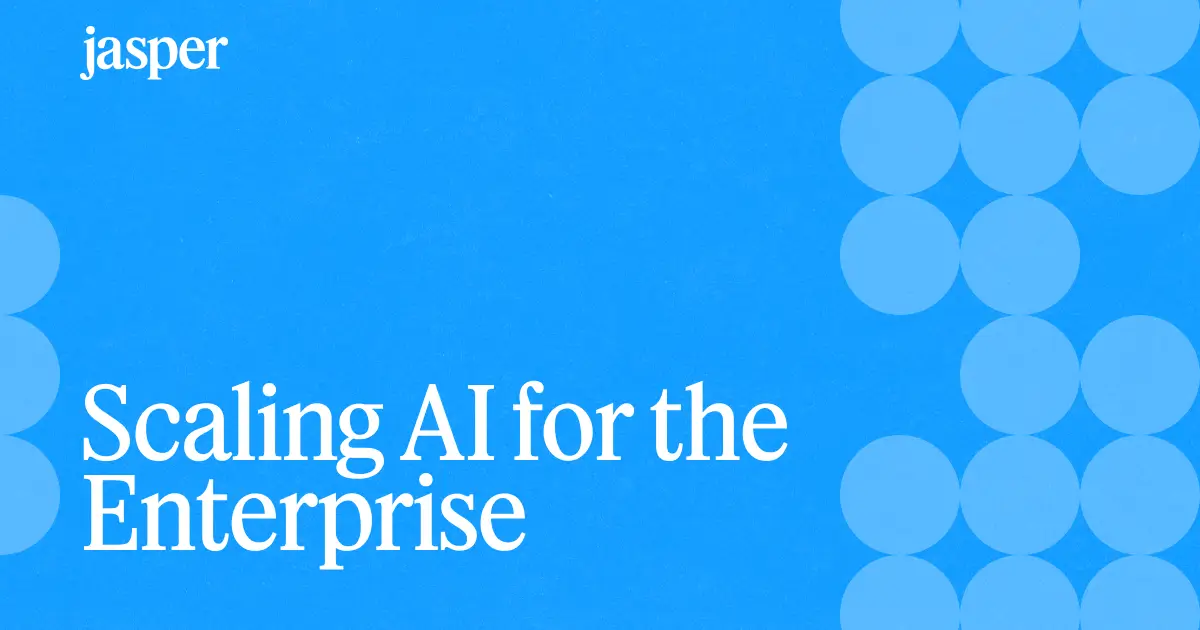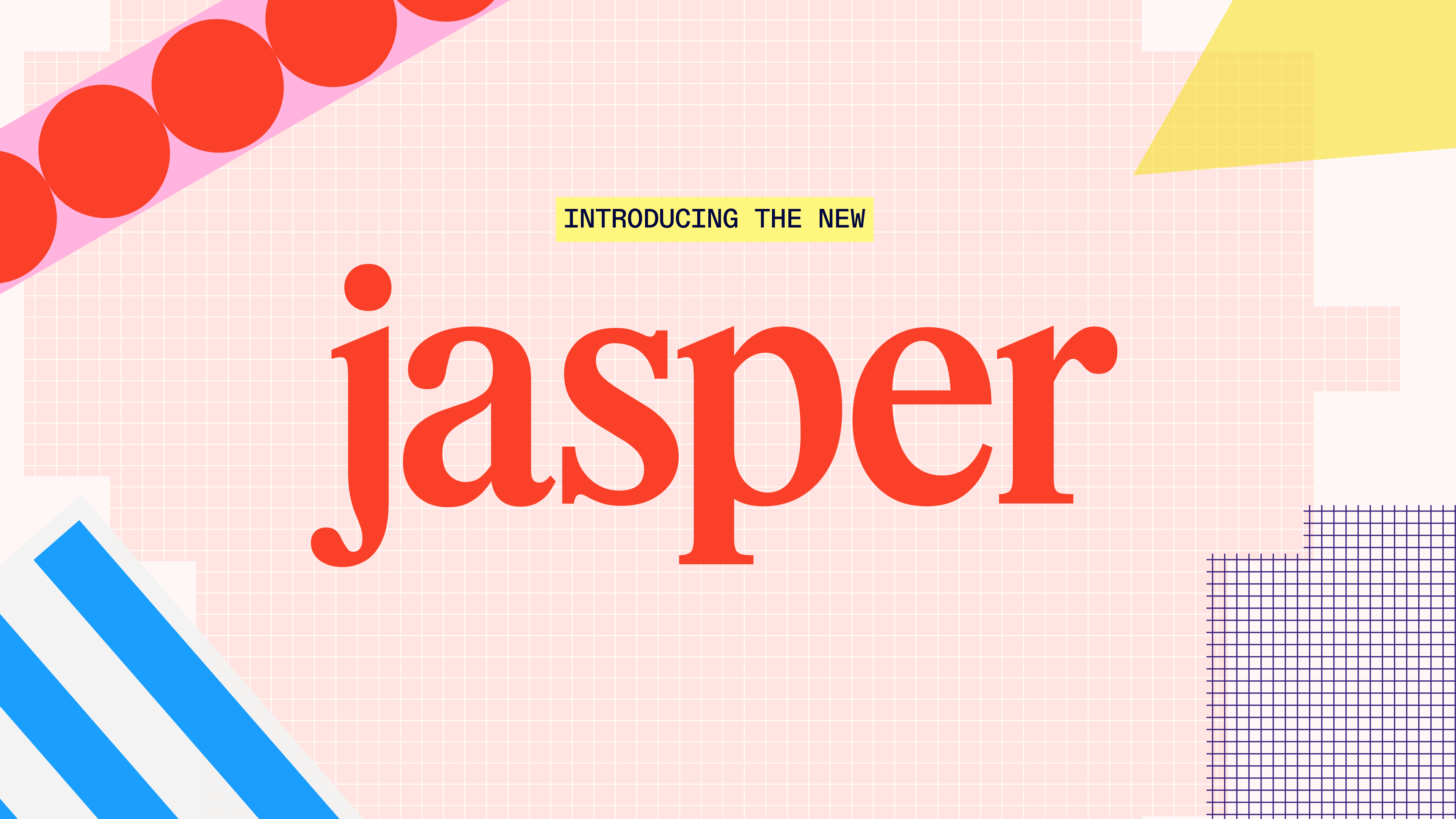Scaling AI for the Enterprise: How Marketing Leaders Drive Impact
High-performing marketing teams are scaling AI with structure and strategy. Learn how CMOs can lead the way to drive organization-wide impact.

AI is reshaping the way marketing teams operate. Ideation, content creation, campaign optimization, and performance analytics—these are just some of the areas where marketing AI is seeing high adoption across industries.
Still, widespread adoption has not yet translated into consistent impact. CMOs and other high level marketing leaders are all in; Jasper’s 2025 State of AI in Marketing Report found 89% say they’re committed to AI. But their support alone isn’t moving the needle.
Right now, too many teams are stuck in experimentation mode. AI tools are being used, but they’re not embedded into workflows. Training is inconsistent. ROI is hard to track. And without an intentional strategy, AI’s impact stays isolated instead of systemic.
CMOs have a challenge and opportunity at hand: Take the AI enthusiasm that already exists on their teams and turn it into a scalable and high-value transformation.
In this blog, we’ll fully unpack the AI opportunity for marketing leaders in 2025 and preview how high-maturity teams are turning AI into a repeatable, scalable advantage.
Download the ebook for the full insights on maximizing marketing AI potential for your team.
The AI impact gap: Leaders are all in, but ROI lags
CMO support for AI isn’t all talk. Many leaders are prioritizing new AI tools, approving budget increases, and starting to reshape how their teams operate. But commitment at the top has not yet translated into consistent execution across the organization.
In fact, there is a clear gap between CMO perception of AI maturity and that of execution-level marketers. In Jasper’s report, 26% of CMOs say their maturity is advanced, but only 6% of their teams reports the same. Additionally, 65% of CMOs say their leadership is "very committed to AI," but only 32% of their teams agree.

This disconnect points to a lack of shared structure, training, and standards. Executives may see isolated successes as signs of progress, while on the ground, marketers are still figuring out how to integrate and scale AI across their core workflows.
When the AI gap goes unaddressed, progress slows. Marketing AI use remains fragmented, and teams struggle to build on early momentum. To meaningfully scale AI, leaders need more than enthusiasm. They need systems that create consistency, accountability, and measurable results.
What high-maturity marketing teams do differently
High-maturity marketing teams are already seeing consistent and impactful results from AI, running campaigns, producing content, and measuring performance with AI built into the core of how they work.
What sets these teams apart is the right structure—not luck or larger budgets. Jasper’s research identified seven traits that consistently show up in high-maturity marketing organizations. These are markers of teams that have made AI operational and scalable.
A few examples:
- Documented use cases: Advanced teams don’t rely on word of mouth or trial and error. They create a central source of truth for how AI supports different roles and workflows.
- Governance and training: The most advanced teams have councils, policies, and role-specific education programs in place to support safe and effective use.
- Domain-specific tools: Instead of general-purpose platforms, these teams use AI built for marketers, improving alignment with brand standards, content goals, and marketing KPIs.
Each of the traits shows how structure supports success. The more a team builds them into its operation, the more likely it is to see real, measurable impact.
Why domain-specific tools matter for marketing AI
Most marketing teams start their AI journey with general-purpose platforms. These tools offer broad functionality and are easy to access, making them useful for early experimentation. They can handle tasks like content summarization and basic copy generation. But as teams aim to realize strategic value from AI, the limitations of generic AI tools become clear.
Most general-purpose platforms lack the nuance to maintain brand voice, support specific workflows, and generate outputs that align with strategic marketing goals. This gap often leads to inconsistent messaging and inefficient content production.
High-performing teams use platforms designed specifically for marketers. Today 71% of advanced teams use domain-specific tools purpose-built to replicate their brand voice, integrate into their unique workflows, and create content that resonates with their target audiences.
Teams using domain-specific tools are also 37% more likely to connect AI use to ROI and feel confident about expanding their adoption. For organizations ready to operationalize AI across the marketing function, choosing the right tool makes a measurable difference.
Taking action toward AI maturity
Most marketing teams have access to AI. Some have even seen early wins. But turning that momentum into long-term impact takes more than curiosity or quick fixes. It takes structure. The most successful teams are following a clear set of steps to make AI a dependable part of their daily operations, including establishing marketing AI councils, integrating AI into core workflows, and tracking ROI from the start.
CMOs are well positioned to lead AI transformation. They already influence content, brand, customer experience, and revenue at the highest levels. With the right foundation, they can help AI deliver on its full potential across every part of the marketing organization.
Download the ebook Scaling AI for the Enterprise: A Playbook for Marketing Leaders to get the frameworks, traits, and systems your team needs to make AI work today at scale.
More of the latest & greatest

Reflections from Cannes: Why Brand and People Still Matter Most in the Era of AI
At Cannes Lions 2025, one truth stood out: brand, trust, and authenticity are making a powerful comeback.
June 24, 2025
|
Loreal Lynch

Interactive Tool: Benchmark Your AI in Marketing Strategy
Discover your marketing team's AI maturity. Benchmark your strategy, compare with peers, and uncover gaps with an interactive tool.
June 17, 2025
|
Megan Dubin

Introducing the New Jasper: The First Multi-Agent Platform Built for Marketers
Discover the new Jasper AI experience, built for enterprise marketers to scale content and strategy with precision and true-to-brand authenticity.
June 10, 2025
|
Timothy Young







